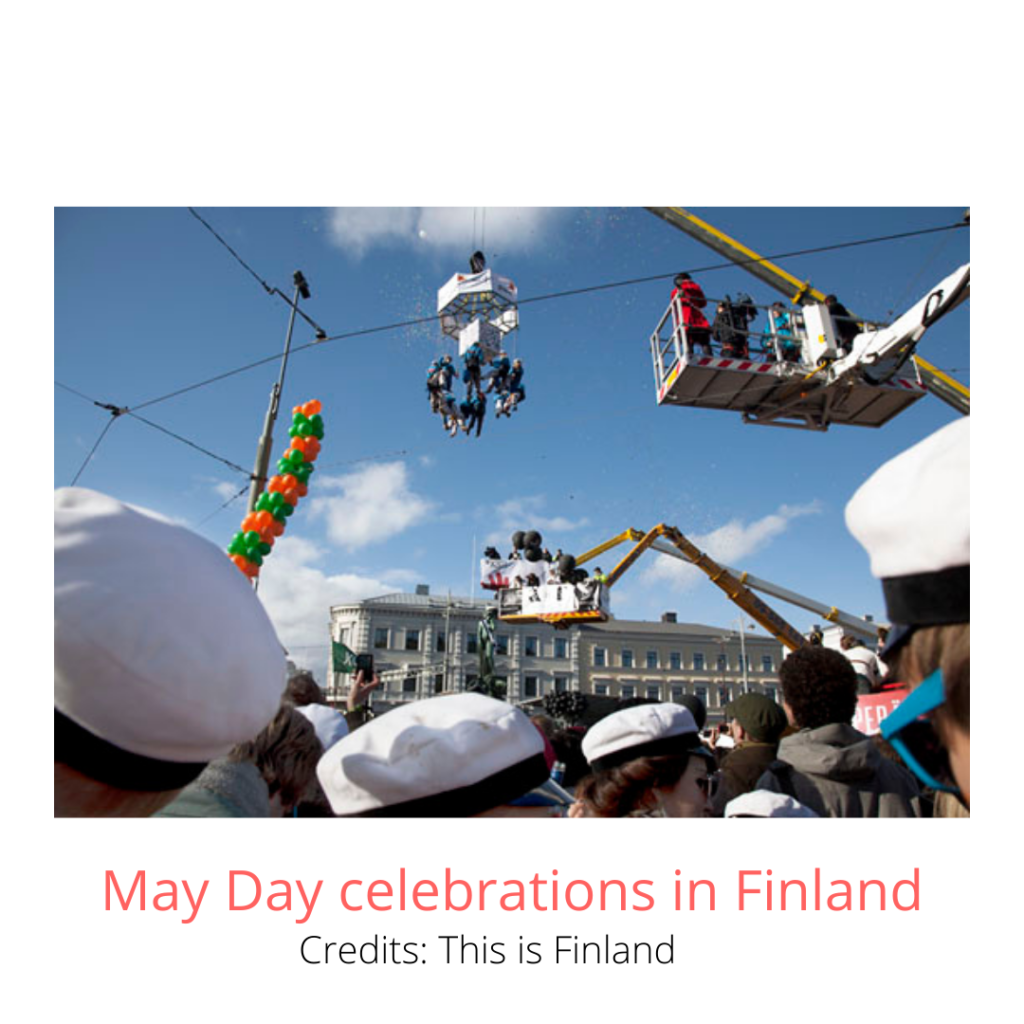Your basket is currently empty!

May Day, the return of the spring
Although spring first comes in March when people begin to see buds on their trees, it begins to feel warmer a few weeks later, closer to Easter time.
The first day of May is a day of celebration of spring for many countries in the northern hemisphere. This celebration has its roots in the pagan festivals of the past, with many of the ancient customs surviving to this day.
With the prevalence of Christianity in Europe, many of them were either banned or mutated. As a result, the May Day celebration ceased to have a religious-ritual character and focused on nature and flowers.
May Day celebrations in Greece

Every year on May Day, many people go out to the countryside to “catch in May”. In Greece, it is ceremonially celebrated with the creation of wreaths of flowers. So people are, even for a while, again close to nature, away from the cement and the hectic pace of the city. This may be the only custom that connects May Day with its ancient version as a celebration of flowers. According to tradition, the makeshift wreath is hung and adorns the doors of the houses until the eve of St. John the Lampadaris or Klidonas, on June 23, when it is burned in large fires, and people jump over the flames three times.
The origins of May
The month of May took its name from the Midwife. According to Greek mythology, she was one of the Pleiades and the mother of the god Hermes. But in another version, the origin of the name is attributed to the Roman deity Maya who was the wife of Hephaestus.
The forerunner of today’s May Day celebration was the Anthesteria or Dionysia. The Anthesteria was the first established celebration of flowers. It was celebrated every year from the 11th to the 13th day of the month of Anthesterionos, i.e. 2 to 4 February. The Anthesteria was initially celebrated only in Athens, but they acquired a panhellenic character over the years. It was also, in a way, a religious celebration since it was dedicated to the god Dionysus.
In ancient times, the Greeks also celebrated the “Anthophoria”, which was a celebration similar to modern May Day. At that time, young women and girls adorned their hair with floral wreaths in honour of the Goddess Demetra and her daughter, Persephone.
May Day celebrations in Scotland and Ireland
Nowadays people all over Britain have lots of fun events in their cities every year on or near the 1st of May as they celebrate spring’s arrival by enjoying some very important traditions like Morris Dancing: A traditional English dance performed by dozens of girls wearing dazzling costumes that are brightly coloured featuring ribbons and bells.

The event dates back to the 12th century and has nothing to do with labour unions or politics. It’s simply a celebration of springtime, life and joy! Morris refers to an area known as Merton, once located in Surrey. This was where Lord Merton had his private court, where he would hold festivals celebrating May Day and other occasions.
Traditions in Different Countries
In Finland, it is a day of student celebrations and family picnics in a carnival atmosphere. In a long-held tradition, a crane lifts a group of students to place a cap upon the head of Havis Amanda, a landmark statue in the capital.

In Italy, a big concert is held every year on such a day in Rome. The famous “First of May Concert” is sponsored by the major Italian trade unions for the protection of workers’ rights.

In France, May Day, also called Lily of the Valley Day, is the opportunity for people to buy unique flowers. It is a tradition to offer a sprig of lily of the valley to loved ones on this day. In the week leading up to May Day, you can buy bunches of this fragrant spring flower in every florist and most supermarkets, either as cut flowers or plants in pots.
In Austria and Germany, the may tree is celebrated. It is a decorated tree or tree trunk usually erected on 1 Mayor on the evening before.
Along the way, however, this particular date identified with the struggles of the workers all over the world. It is also called Labour Day in various countries around the world.
Where did Labor Day start?
May Day has established as workers’ day because of the uprising-massacre in Chicago, United States, in May 1886. Specifically, in May 1886, workers gathered in Chicago’s Haymarket Square to demonstrate peacefully. They demanded to work for eight hours and better working conditions with the slogan “Eight hours of work, eight hours of rest, eight hours of sleep”.

The following year, the state of Oregon on the West Coast of the U.S. was the first state to establish the celebration of Labor Day, followed by more. In America and Canada, this day is celebrated on the first Monday of every September. In the rest of the world, the first of May prevailed due to the events in Chicago.
What could make your celebration more meaningful?
You could get together with friends and family and create something special. Why not follow some of the traditions that are followed in other countries? Or maybe you would prefer to do something creative like making art, writing poetry, dancing, singing songs or playing music together.
Whatever you decide to do, have a fabulous May Day!

